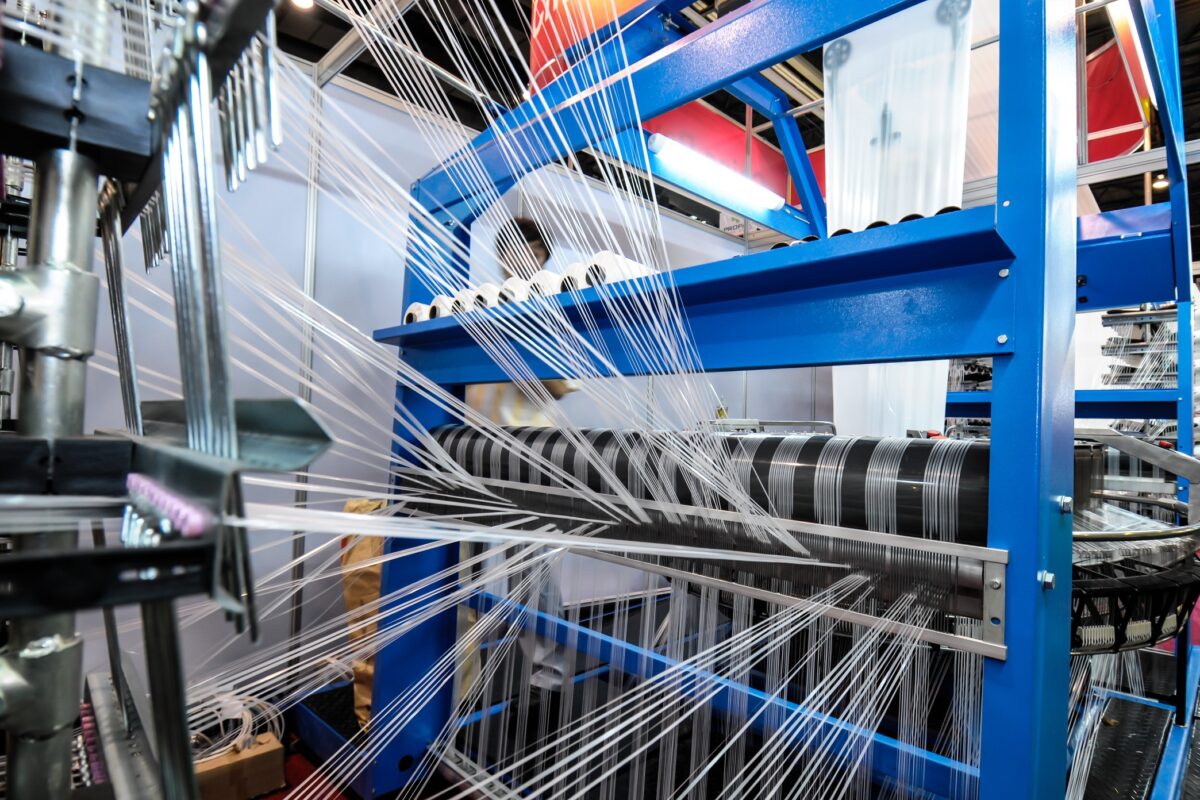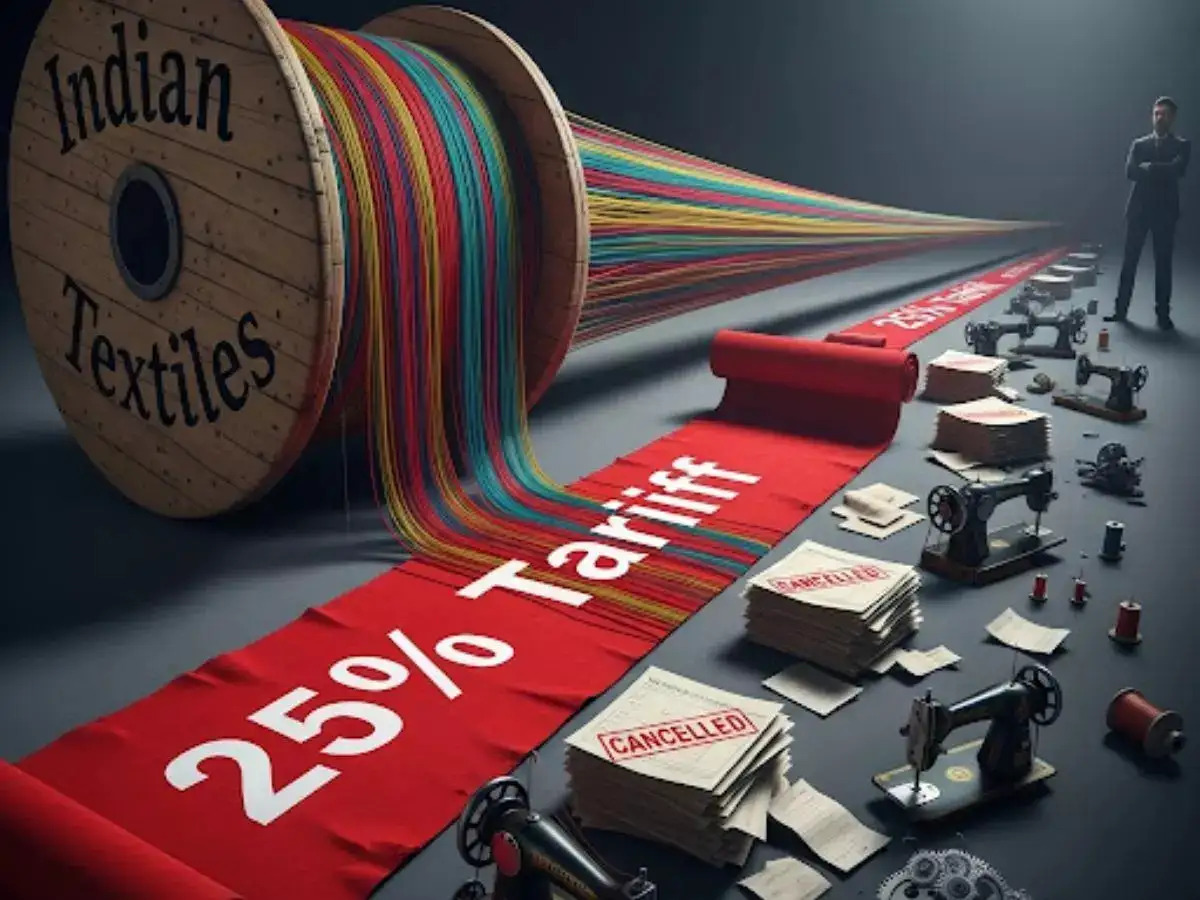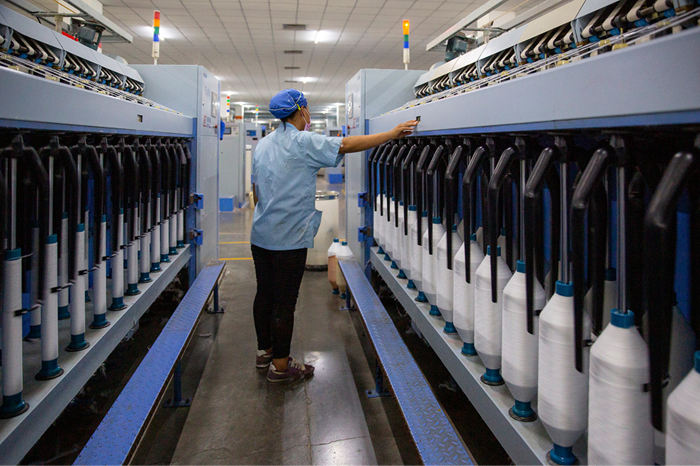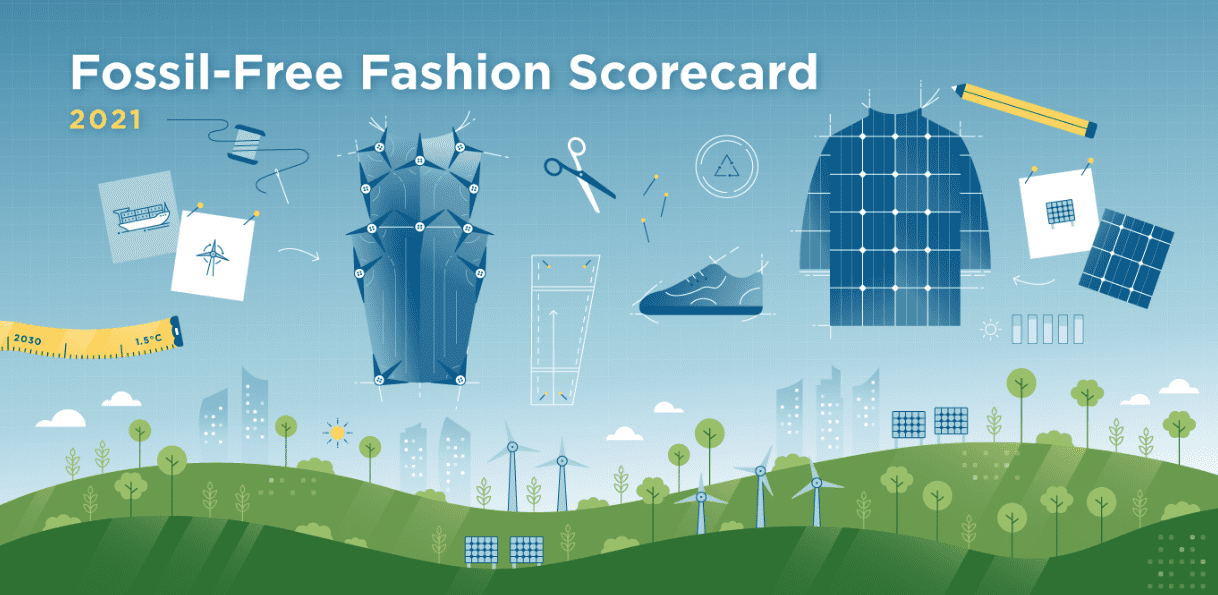FW
The ministry of commerce and ministry of labour in Cambodia has signed a MoU with the Garment Manufacturers Association of Cambodia (GMAC) and International Labour Organisation’s Better Factories Cambodia (BFC) for a programme to improve working conditions and boost competitiveness in the country’s garment industry.
The MoU has been signed to extend the partnership for three years, from January 2017 to December 2019, during which the partners will collaborate to build institutional sustainability of the programme. With the MoU in force, Cambodia has agreed to contribute approximately 25 per cent to the BFC’s budget over the next three years while international garment buyers sourcing from Cambodia who use the ILO BFC programme assessment reports and factories that participate in BFC training courses will contribute to programme operation based on fees for services rendered.
The BFC program will continue to assess working conditions in garment factories based on Cambodian labour law and internationally recognised core labour standards and to report on its findings publicly by detailing compliance and non-compliance of individual factories. BFC will also work with the Ministry of Labour to implement a joint strategy and action plan with the objective to support government’s capacity and ownership to uphold compliance with labour law and make necessary changes in the garment sector.
BFC is part of the Better Work Program, a collaboration between the ILO and the IFC which operates across three continents to catalyse change along global supply chains in the garment industry, the work of BFC will be an integral part, in the recently signed, Cambodia Decent Work Country Programme. In all, the MoU has been renewed five times by the parties since the ILO BFC programme began in 2001.
Within two weeks ago of 13 workers being killed in a fire at a factory manufacturing leather jackets on the outskirts of New Delhi world’s attention is being drawn by the horrendous working conditions endured by millions of garment workers in various RMG units. Now, in Bengaluru, garment workers are beginning to take a stand.
In a striking example of this growing self-advocacy, work in Bengaluru came to a halt on April this year as a massive protest by thousands of women working in the city’s garment sector blocked arterial roads.
Over 1,200 factories where 90 per cent of the 500,000 workers are women, function on the outskirts of the city. For decades, women have worked in exploitative conditions, earning a minimum monthly wage as low as Rs 4,000. But in a city full of migrant IT workers, their plight was largely ignored until news about an amendment in government rules concerning PF brought them out onto the streets. Not only did the government roll back proposed changes, the strike also brought stories of these women into the mainstream.
A study on occupational health and safety in the garment industry by Cividep, a Bangalore-based NGO on worker’s rights and corporate accountability, has come to the conclusion that the city’s garment workers often suffer from respiratory illnesses, tuberculosis, ergonomic issues like back pain, mental health problems such as depression and anxiety and reproductive health issues such as white discharge, irregular periods and excessive bleeding. Occupational health problems are common amongst workers in the garment industry in other parts of the world as well. Women in the garment sector also have to fight off sexual harassment from male colleagues.
With increase in cotton arrivals in market amidst sagging demand from spinning mills, prices that shot up last week in the wake of government’s bold move at demonetization, have started falling. Daily market arrivals improved to around 1.2 lakh bales (of 170 kg each) from around 80,000 bales last week.
After touching a high of Rs. 41,000 per candy (355 kg), prices have now come down to between Rs 39,000-39,500. Similarly, prices of raw cotton (kapas) have fallen down to between Rs. 4,900-5,000 from Rs. 5,200-5,300 that prevailed last week. Also, cotton seed prices have come down by Rs. 100-150 per quintal to around Rs. 2,200-2,250, trade sources said.
"Handloom export promotion council' booth is been an integral part of this year show as always. Just to put it in context, Handloom has purely an Indian lineage. A product which is an absolutely eco and skin friendly. A fabric which happens to be uniquely intriguing both to rich and poor and is quite versatile & vibrant. Also admittedly is well been introduced to this part of the world by this fair."
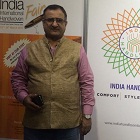
'Handloom export promotion council' booth is been an integral part of this year show as always. Just to put it in context, Handloom has purely an Indian lineage. A product which is an absolutely eco and skin friendly. A fabric which happens to be uniquely intriguing both to rich and poor and is quite versatile & vibrant. Also admittedly is well been introduced to this part of the world by this fair.
In fact it is already a priority of the existing government to popularise Indian handloom and 'Ministry of Textile'(MOT) is mandated to make Indian handloom popular globally.
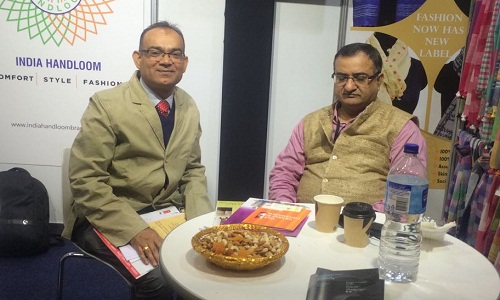
Aiming to achieve the goal post, in the year 2015 under Ministry of Textile(MOT) "India Handloom Brand" was fondly launched. Referring to ISEA M.C.Gupta, Addl. Devolpment Commissioner (HANDLOOMS) states that this year we have brought 10 exporters of handloom products to ISEA & who all are engaged in handloom production.Among these 10 we have brought representatives from one cluster which has been developed with the support of 'Government of India' namely "Fulia Handloom Cluster".
Mr Gupta further explains very passionately "Apart from that we have brought loom which is demonstrating live weaving ". This amazing feature has already made us a big draw & therefore visitors are attracted like anything.This at large has generated lot of interest to go for adopting handloom products and resultant boost to handloom products both back home and necessary introduction to this market in particular and our global initiative in general.
Since India is into promoting handloom to global level so MOT is supporting fairs all over the world and this year we have planned 22 exhibitions in various countries in year 2016/17.
ISEA participation is a regular feature on our global fair agenda and this is fifth running year of participation and been very productive every single time.
Italian fabric maker Vitale Barberis Canonico has asked the country’s trade minister to address concerns about animal welfare and a wool market that seems to be struggling. So much so, Davide Fontaneto, a raw wool buyer from Vitale Barberis Canonico has urged action on animal welfare.
Fontaneto’s call follows European wool buyer Laurence Modiano’s letter calling for compulsory pain relief for lambs at the time of mule sing. Opined Fontaneto in an interview that at the beginning of this year the Australian Ambassador had visited Biella in northern Italy and so did the Trade Minister. Then, a letter highlighting the problem in the wool market was handed over to the minister and he was also informed about animal welfare and the problem of mule sing.
Canonico, which has been making textiles in the northern region of Biella since 1663, brings out eight million metres of fabric a year with a turnover of €116 million. Australian wool producers grow the world’s finest wool, but the global financial crisis seven years ago nearly killed the industry. Along with, a growing hunger for sheep meat combined with a concerted campaign by animal activists put further pressure on the industry with the national flock now half of what it was at its peak.
As demonetisation enters a fortnight, there is news that its after-effects seems to have taken a toll of the country's largest man-made fabric (MMF) sector. According to the Synthetic and Rayon Textile Export Promotion Council (SRTEPC), trade has lost steam with weavers, textile processors and traders facing severe liquidity crunch amid falling demand of fabrics and cloth from the key consumer market in the country.
Delegates from SRTEPC and around 17 other export promotion councils across the country (two members each from the councils) attended a meeting convened by the Central government on the impact of demonetisation on the trade and commerce in New Delhi.
The vice-chairman of SRTEPC, in his presentation on the impact of demonetisation on textile sector pointed out that the man-made fabric (MMF) sector is facing dire situation and is on the verge of collapse. Only 30 per cent of the units are operational whereas the rest have shut down due to the impact of demonetisation. SRTEPC's vice-chairman Narain Agarwal, barring spinning units, majority of yarn preparatory, texturizing, sizing, twisting, warping, weaving, processing and embroidery units have been paying wages in cash to the workers. They maintain accounts and it reflects in their balance sheets. After demonetisation, workers’ wages has become a big question. He SRTEPC has demanded unit owners should get cash in new currency. Meanwhile, workers would be encouraged to open bank accounts, he said.
Agarwal said from manufacturers to wholesale to retail and consumer, there was no demand in the market. Liquidity of cash has almost been squeezed. This has led to the closure of 80 per cent textile processing units and weavers are forced to operate eight hours a day and almost 90 per cent embroidery and knitting units closed.
With the government’s move to ban high value currency notes exports of 1 million bales of cotton from India have been delayed. This has prompted farmers, who prefer payments by cash, to postpone sales, say officials. The supply crunch has driven up prices in India to levels higher than in the global market and could force buyers to switch to other producers like the United States, Brazil and African countries. It could also restrain India's total exports in the 2016/17 year marketing year that started on October 1.
Earlier this month, the Prime Minister scrapped Rs 500 and Rs 1,000 bills to crack down on corruption. But the move disrupted trading of farm commodities like cotton and soybean as most farmers prefer payments in cash. As is known that November remains a peak supply month but now supplies have stopped due to the cash crunch. Farmers who had the habit of taking payments by cash are not taking cheque payment.
Expecting a bumper crop of 35 million bales, Indian traders had contracted 2 million bales for exports to China, Vietnam, Bangladesh and Pakistan for shipments in November to January. But traders have managed to ship only around 300,000 bales and nearly 1 million bales that were due to ship in November and December are getting delayed, it is understood. India's inability to ship promptly could force buyers to switch to other suppliers like Brazil and the United States.
US president Barack Obama discussed a wide range of economic and trade matters at the 24th annual meeting of Asia-Pacific Economic Cooperation (APEC) forum leaders held in Peru on November 20. The president sought to reassure leaders from Trans-Pacific Partnership (TPP) signatory countries about the United States’ strong support for trade and its commitment to strengthening ties with the Asia-Pacific region. He also commended those leaders who have already successfully worked with their legislatures to advance the TPP ratification process and encouraged additional efforts in this area.
In his meeting with Chinese President Xi Jinping, Obama also took stock of the evolution of US-China economic and trade relations. Among other things, he encouraged President Xi to advance reforms that will help China shift to a sustainable, domestic consumption-driven economic model including reforms of state-owned enterprises and efforts to strengthen China’s financial system and transition to a market-determined exchange rate in an orderly fashion.
In addition, he stressed the urgency of addressing excess capacity in industrial sectors, including by launching as soon as possible the Global Forum on Steel Excess Capacity in line with the G-20 leaders’ Hangzhou agreement. APEC leaders also adopted or reaffirmed various initiatives and commitments aimed at ensuring that the benefits of the global economy are more broadly shared.
Organ Needle from Japan makes domestic and industrial sewing-machine needles, holding about 20 per cent of the global market share. The company produces a billion needles a year. It also makes pins for testing functions for smart phone and auto engine parts. The company develops machines that can create complicated shapes based on metalworking techniques it acquired making phonograph needles. Organ Needle collaborates with metalworking makers on improving materials to develop more durable needles for industrial sewing machines.
Currently, 90 per cent of the company’s products are shipped to about 90 countries around the world. Organ Needle has sales offices in Europe and Singapore as well as sales agencies in various countries. Organ Needle caters to diverse demands from customers and currently produces some 7,000 types of needles. It will take advantage of its internal production of equipment to manufacture needles in order to actively make proposals to and promote joint development with sewing machine and apparel makers.
Sales in China have slowed but are strong in Vietnam and other southeast Asian countries. The company has a sales unit in Vietnam and plans to expand in Bangladesh, India and Myanmar, where markets are expected to grow. The process of making sewing-machine needles takes more than 40 steps.
As the public release of supply chain information becomes a tool for apparel brands to show their commitments to promoting healthy workplaces for their subcontractors, a lot of them are disclosing lists online of their factories that are mostly based in Asia.
A recent example being US clothing brand GAP that made its supplier list available. This consists of nearly 900 garment factories in Bangladesh, Cambodia and other countries. The company said it had revised its disclosure policy for supply-chain information seeking to promote global sustainability.
According to Human Rights Watch, an international non-profit group, at least four major retailers including GAP, C&A of Germany and British store chain Marks & Spencer have disclosed their supplier list this year. Earlier, GAP was known for its negative stance on the disclosure due to what it called as competition reasons.
The first of the adopters of the disclosure include US sport brand Nike and H&M, the Swedish fast fashion chain. Nike's supplier list includes details about its contract factories such as the number of workers by location and the proportion of female and immigrant labour. Many western apparel brands and retailers are particularly keen on disclosing their factory list, it is understood. The lists have been considered closely guarded trade secrets for many manufacturers because making them public could lead to information leaks about specific products.
Earlier it was believed that providing names of skilled subcontractors to competitors could also harm competitiveness. Nonetheless, the idea is rapidly spreading around the world that leading manufacturers should be responsible for the working conditions of their subcontractors.







